June 15, 2025 | 13:14 GMT +7
June 15, 2025 | 13:14 GMT +7
Hotline: 0913.378.918
June 15, 2025 | 13:14 GMT +7
Hotline: 0913.378.918

Deputy Minister Phung Duc Tien pointed out many inadequacies in seafood exploitation and processing. Photo: VD.
According to data at the conference, the seafood exploitation production was 3,886 million tons in 2021, up 0.9 percent year on year.
In which, marine exploitation touched 3.691 million tons (up 1 percent ), domestic exploitation reached 196 thousand tons (up 0.2 percent ); export value was USD 8.889 billion. Export values of various goods soared including shellfish mollusks, tuna; squid, octopus...
Aqua items contributed to the primary export share in the group of total seafood export turnover in 2021, comprising other marine fish (49.8 percent ), tuna (22.35 percent ), mollusks (17. 9 percent ) ...
Good hints from the speed of seafood export value increase
Seafood exploitation output in the first two months of 2022 reached 566.7 thousand tons, up 0.1 percent ; seafood export value reached USD 1.508 billion, up 51.1 percent year on year. In this, aqua products exports reached USD 0.573 billion, accounting for 38 percent , up 51 percent . Seafood varieties with soaring export turnover are tuna, squid, octopus and crabs. The growth rate of fisheries production value rose 3.1 percent versus that of 2020.
The fruitful outcomes are the result of favorable policies, which created conditions for seafood exploitation, processing, and consumption such as the declaration of 77 storm-shedding anchorages for fishing vessels; the opening of 65 fishing ports; the designation of 49 fishing ports eligible for certification and authentication of fisheries exploitation…
Fisheries logistics services develop with 354 ice water production facilities; 640 cold storages for seafood with the cumulative capacity of around 78.7 thousand tons and 14 warehouses for leash with the storage capacity of 46 thousand tons; 9 seafood sorters, ensuring the categorization of 240 tons of products daily; 1.1 thousand seafood collective and trading facilities.
The country is now having 10 large-scale fiber mesh processing plants countrywide.
Numerous offshore fishing vessels have been equipped with large capacity machinery and cutting-edge land-based fishing equipment. The transformation of the professional structure not only increases productivity but also enables fishermen to obtain higher-quality products and generate more profit.
By the end of February 2022, the country had 86 fisheries unions in 16 of 28 provinces and cities by the sea, with nearly 17.7 thousand members and more than 6.2 thousand vessels 15 meters or longer; over 4.2 production teams at sea are operational, with nearly 29.6 thousand fishing vessels participating...
Commodity market-based supply chain models also thrived. Enterprises make orders with these chains based on product preservation requirements to assure quality and traceability, while also receiving items at a premium to market pricing.

The value of seafood exports in 2021 reached nearly USD 8.9 billion. Photo: VD.
Numerous research has been conducted to enhance preservation technology and equipment in order to increase the quality of exploited seafood raw resources.
According to the Directorate of Fisheries, the year 2022 will be marked by a number of factors affecting the harvesting and processing of seafood, including complicated developments in global security; a prolonged Covid-19 pandemic...

The fisheries sector aims to achieve negative growth in output but increase in value in order to well implement the 2017 Fisheries Law and its guiding documents and EC recommendations. Photo: VD.
However, the fisheries sector continues to set aims to increase the exploitation and value of seafood. Vietnam's goal for 2022 is to grow at a negative rate in terms of exploitation output while maintaining the growth objective in terms of the product value.
The industry intends to harvest around 8.7 million tons (99.9 percent compared to that of 2021). In which exploitation output is estimated to be approximately 3.78 million tons (97.1 percent in 2021); aquaculture output is estimated to be approximately 4.95 million tons (102.2 percent in 2021), and export revenue is expected to be about USD 8.7 billion.
Additionally, the Ministry of Agriculture and Rural Development identifies several duties and solutions to ensure the stability of overall seafood production. The fisheries industry has consistently reduced exploitation output, increased farming output, and implemented strong solutions to promote values associated with farming and exploitation output in order to boost the production value of seafood in response to the growth aim.
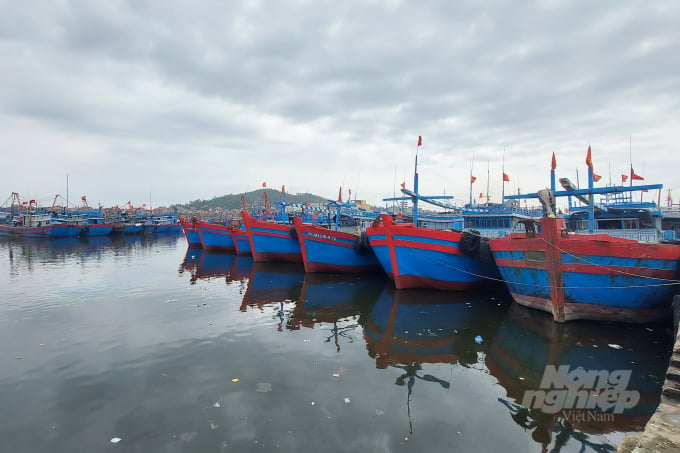
Some localities reduced the number of small-capacity ships and increased the number of large-capacity ones to enhance marine fishing. Photo: VD.
MARD tasked local governments with implementing the 2017 Fisheries Law, as well as the guiding documents and recommendations of the European Commission; surveying profit sources and forecasting fishing grounds for exploitation; managing fishing vessels and sea-based fishing activities, and managing fishery infrastructure and logistics services.
According to representatives of the Department of Agricultural Product Processing and Market Development and conference participants, the critical factors should be improving the quality and minimizing post-harvest losses of exploited seafood materials; increasing the productivity, quality, and efficiency of the processing; and developing consumer markets...
Mr. Le Duc Giang, Vice Chairman of the Thanh Hoa Provincial People's Committee, urged MARD to submit two significant fisheries industry plans to the Governmental Prime Minister for consideration and approval as soon as possible, including Planning on the protection and exploitation of aquatic resources for the period 2021-2030, with a vision to 2050, and Planning on the system of fishing ports and storm shelters for fishing vessels for the period 2021-2030, with a vision to 2050. He also urged MARD to advise the government on developing policies to support organizations, individuals, and businesses engaged in the production of fishing products; and to encourage investment in the form of public-private partnerships in fishing supply chains associated with the processing and consumption of seafood.

Deputy Minister Phung Duc Tien talks with fishermen in Thanh Hoa. Photo: VD.
In concluding the conference, MARD Deputy Minister Phung Duc Tien stated that in order to meet both short and long term targets for the fisheries industry, the Directorate of Fisheries must urgently restructure the fishing fleet to ensure original traceability, transform the professional structure, cruise monitor, and direct provinces, and implement conservation and exploitation planning. Local governments must strictly enforce laws prohibiting IUU fishing.
"A critical priority is the development of fishing port infrastructure. However, provinces must arrange funds for the rehabilitation and upgrading of level 2 and 3 fishing ports rather than waiting for the Central Government. The project to alter fishermen's careers must be executed immediately. To minimize the number of ships and catch, provinces must act as a gateway for fishermen seeking other occupations. It is critical to prioritize added value, processing efficiency, and avoiding seafood loss following capture," Deputy Minister Phung Duc Tien stressed.
Four provinces have yet to finish the process of establishing fishing quotas
The country now has 24/28 coastal provinces and cities that have finished the process of determining fishing quotas in coastal waters and inland regions in accordance with the 2017 Fisheries Law's requirements. Which includes 31,297 permits for sea areas offshore, 18,439 permits for sea regions offshore, and 34,929 permits for inshore areas. Quang Binh, Khanh Hoa, Ho Chi Minh City, and Tien Giang are the four provinces that have not yet finished the process.
Translated by Linh Linh
/2025/06/12/3721-2-202745_83.jpg)
(VAN) TH made an impression at Seoul Food 2025 with its line of natural beverages, paving the way for Vietnamese food products to enter the South Korean market.
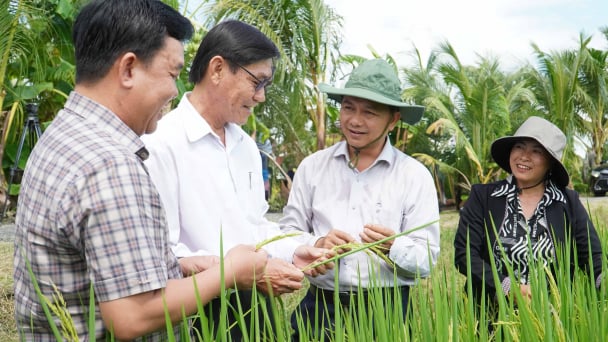
(VAN) Soc Trang's success in rice exports stems from a strategy of developing fragrant and specialty rice cultivation areas and standardizing production toward low-emission practices.
/2025/06/11/1311-5-120811_839.jpg)
(VAN) The pig farming industry is facing the challenge of comprehensive restructuring to meet requirements for quality, safety, traceability, and market expansion both domestically and for export.
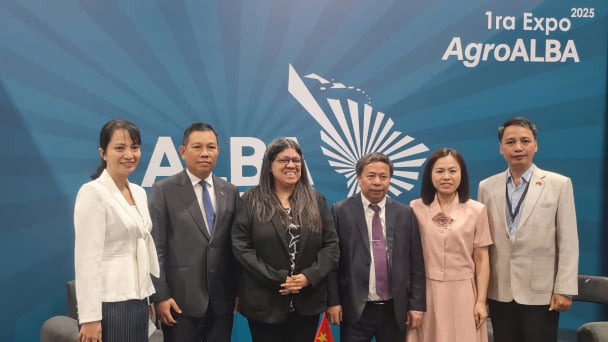
(VAN) Vietnam considers participating in ALGROALBA in order to expand agricultural production, coordinate the assessment and effective exploitation potential land.
/2025/06/05/5314-1-184727_407.jpg)
(VAN) From seemingly worthless fish scales and skin, enzymes and lactic ferments can transform by-products into peptides, opening a sustainable, effective business direction and elevating Vietnamese seafood.
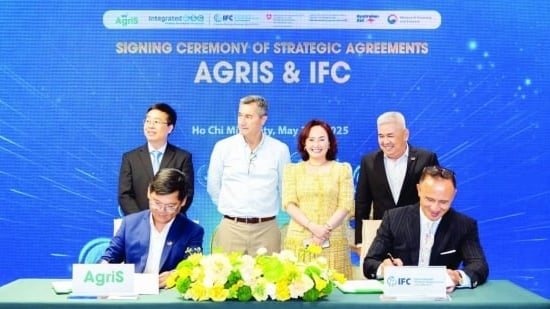
(VAN) TTC AgriS and IFC signed a strategic partnership to develop a sustainable agricultural value chain, aiming to achieve the Net Zero target by 2035.
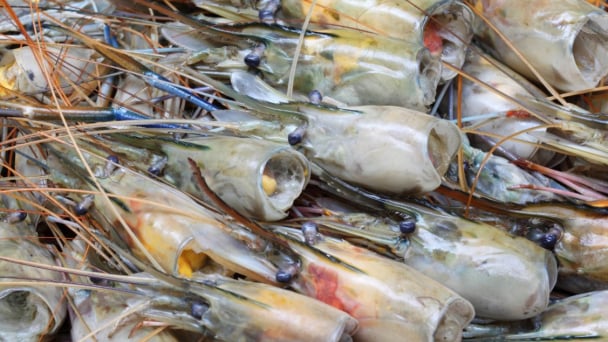
(VAN) Seafood by-products are opening a new path, combining green growth and technological innovation to enhance the industry's value.